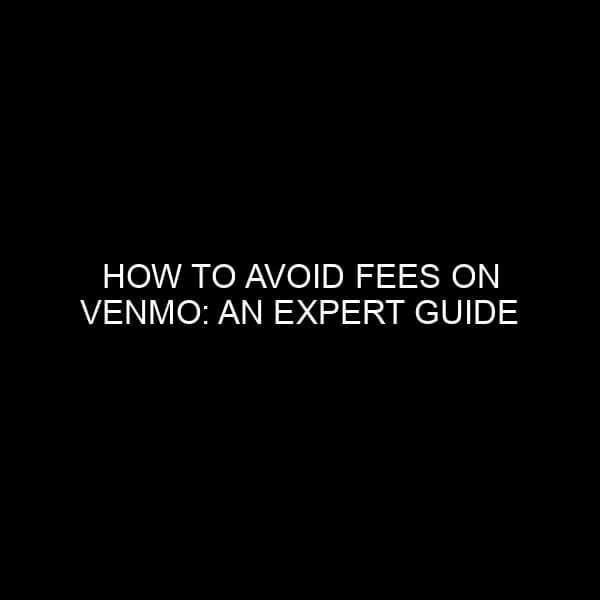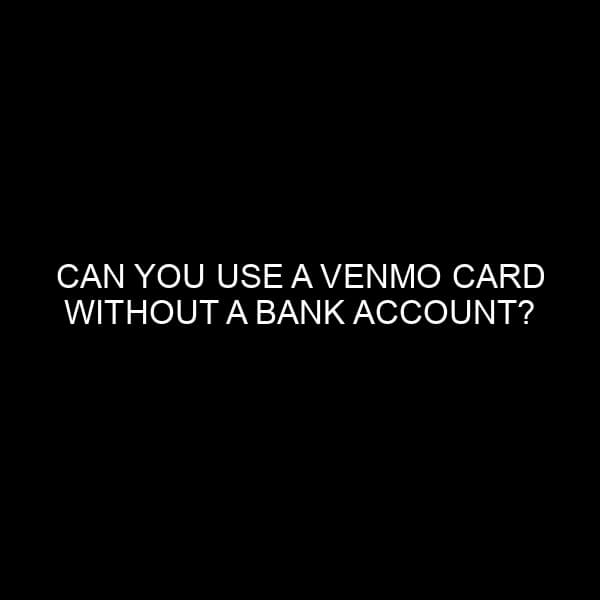Can You Use Just a Bank Account for Venmo? An In-depth Look
In today’s digital age, peer-to-peer (P2P) payment apps have become an indispensable tool for many to easily send and receive money. One of the leading platforms in this domain is Venmo, a service owned by PayPal, which has carved out a significant niche in the U.S. market. A common query that surfaces among potential users and those new to P2P platforms is: Can you use just a bank account for Venmo? Drawing from years of experience in the financial market and banking industry, this article will explore this question in detail.
Understanding Venmo’s Framework
Before diving into the intricacies of bank account linkages and Venmo, it’s essential to grasp the basic framework of Venmo. Launched in 2009, Venmo was designed to facilitate swift P2P transactions. Although often used for splitting bills, reimbursing friends, or paying for services, Venmo’s ease of use has led to its widespread adoption.
Key Elements of Venmo:
- User Profile: Like any other app, users must create a profile. This involves inputting basic personal details.
- Payment Methods: To transact, a user needs to link a payment method. This could be a bank account, credit card, or a debit card.
- Venmo Balance: Money received through Venmo is stored in the user’s Venmo balance. This balance can be used for further transactions or transferred to a linked bank account.
Linking a Bank Account to Venmo
Now, addressing the primary question at hand, can you use just a bank account for Venmo? The answer is a resounding yes. A bank account can be the sole payment method linked to your Venmo profile. In fact, linking a bank account is one of the most common ways users get started with Venmo.
Steps to Link a Bank Account:
- Log in to Venmo: Access your profile and navigate to the ‘Settings’ or ‘Payment Methods’ section.
- Choose ‘Link Bank Account’: Here, you’ll be prompted to enter your banking details.
- Verification Process: Depending on your bank, Venmo might deposit a small amount into your bank account. You would then need to verify these amounts in the app, confirming the link between the bank account and Venmo.
Benefits of Using a Bank Account with Venmo
Linking just a bank account (as opposed to a credit card, for instance) presents several advantages:
- Zero Transaction Fees: Sending money using your Venmo balance, bank account, or a debit card is free. However, credit card transactions attract a 3% fee.
- Higher Spending Limits: Once your identity is verified, transactions via bank accounts have a higher weekly rolling limit of $6,999.99 compared to the general $4,999.99 for other transactions.
Potential Concerns and Safety Measures
While using a bank account with Venmo is convenient, there are valid security concerns.
- Potential Scams: P2P platforms, including Venmo, have been targets for scams. It’s crucial to transact only with known parties.
- Data Breaches: Like all digital platforms, there’s always a risk of data breaches. Ensuring a strong, unique password and enabling multi-factor authentication can mitigate some risks.
Venmo uses encryption to protect user data and constantly monitors accounts for suspicious activity. Regularly reviewing account activity can help detect any unauthorized transactions.
Comparative Insights: Bank Account vs. Other Payment Methods
While a bank account offers numerous advantages as a linked payment method, it’s worth comparing it to alternatives:
- Debit Cards: Similar to bank accounts, they don’t attract fees and have generous transaction limits. However, not all users may have or prefer using debit cards.
- Credit Cards: As mentioned, there’s a 3% transaction fee. They could be beneficial for those looking to rack up reward points or handle cash flow. However, for regular, everyday transactions, they may not be the most economical choice.
- Venmo Balance: It’s convenient for frequent users but necessitates having a balance. For those who sporadically use Venmo, maintaining a balance might not be ideal.
Conclusion
In summary, not only can you use just a bank account for Venmo, but doing so also offers several tangible benefits like zero transaction fees and higher spending limits. Like all financial tools and platforms, it’s essential to exercise caution, stay informed about potential risks, and employ best practices for digital safety. Given the rapid evolution of the digital payment landscape, choosing the right payment method tailored to individual preferences and understanding its implications is paramount. With the right approach, platforms like Venmo can significantly simplify personal transactions in our increasingly cashless society.






